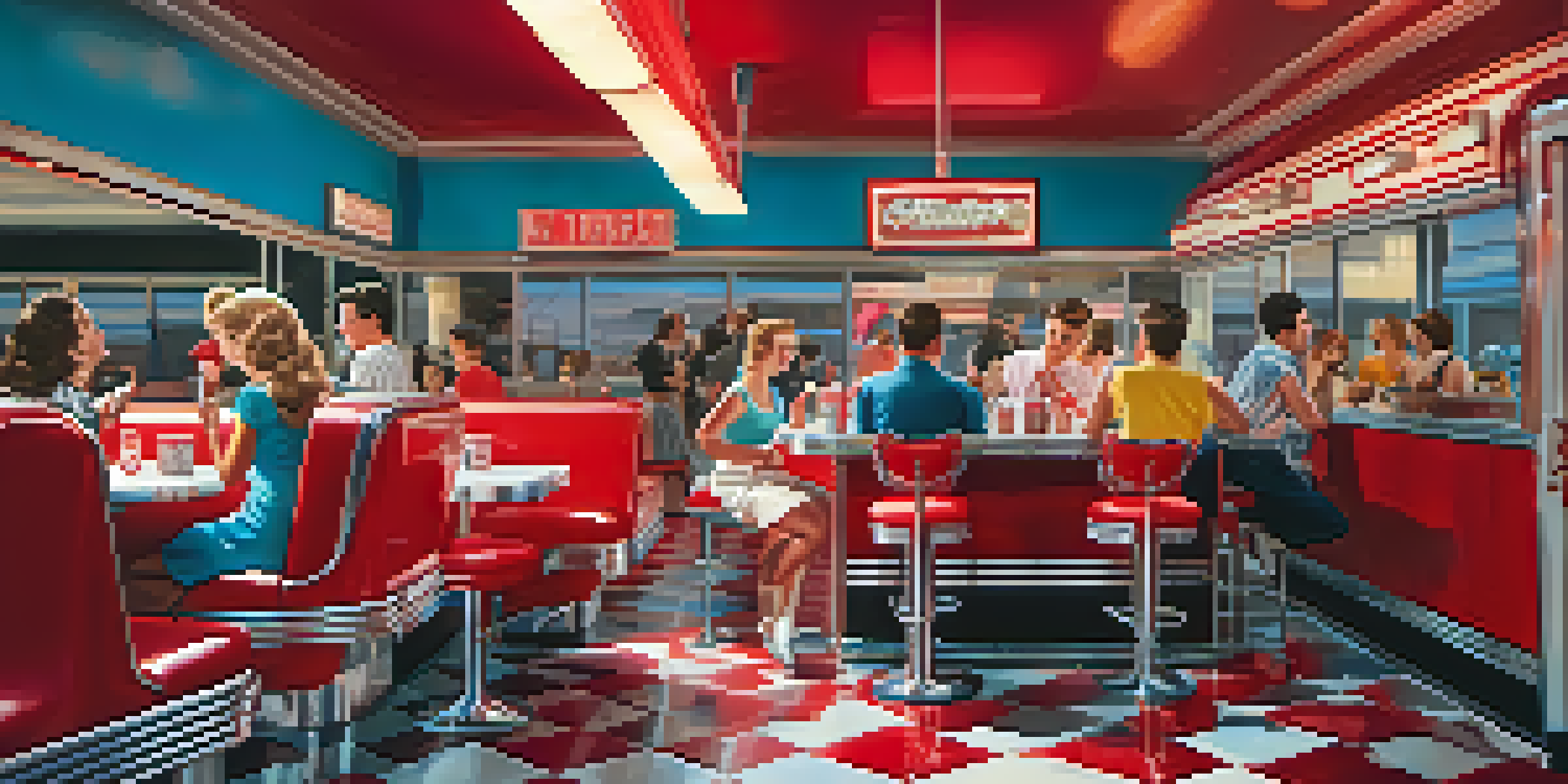The Evolution of Youth Culture Through Cinematic Trends

The 1950s: Birth of the Teenager in Film
The 1950s marked a pivotal moment in cinema, introducing the concept of the 'teenager' as a distinct social group. Films like 'Rebel Without a Cause' highlighted the struggles and aspirations of youth, resonating with a generation feeling the weight of societal expectations. This era depicted teenagers grappling with identity, often against the backdrop of post-war America, making their experiences relatable to audiences. The emergence of rock 'n' roll further shaped this narrative, influencing both music and fashion, making youth culture a significant force in filmmaking.
The 1960s: Counterculture and Social Change
As the 1960s rolled in, youth culture began to reflect wider social changes, embracing counterculture movements. Films like 'Easy Rider' captured the spirit of rebellion and the quest for freedom, mirroring the anti-establishment sentiments of the time. This decade also saw the rise of youth-led protests, with cinema serving as a platform to express discontent and advocate for change. The portrayal of youth in film became more diverse, highlighting issues like race, gender, and sexuality, paving the way for future generations to explore their identities.
Evolution of Youth in Film
Over the decades, films have portrayed the complexities of youth, reflecting their struggles, identities, and social movements.
The 1970s: Disillusionment and Realism
The 1970s brought with it a sense of disillusionment, reflected in films that showcased the struggles of young adults. Movies such as 'The Graduate' depicted a generation questioning traditional values and societal norms, resonating with audiences feeling lost in a rapidly changing world. This era introduced a more realistic portrayal of youth, focusing on the complexities of relationships, identity, and economic hardship. The raw, unfiltered approach to storytelling in cinema allowed young viewers to see their own experiences mirrored on screen.
The 1980s: The Rise of the Teen Comedy
With the 1980s came a wave of teen comedies that encapsulated the carefree spirit of youth, albeit often in a lighthearted way. Films like 'Ferris Bueller's Day Off' and 'The Breakfast Club' cleverly combined humor with deeper themes of friendship and self-discovery. These movies not only entertained but also provided a sense of community for young audiences, resonating with their everyday experiences. The iconic fashion and music from this era further solidified its place in youth culture, making it a nostalgic touchstone for many.
Impact of Technology on Youth
The rise of the internet and social media has significantly influenced youth culture, shaping relationships and storytelling in cinema.
The 1990s: Diversity and Subcultures in Film
The 1990s ushered in a new wave of films that celebrated diversity and highlighted various subcultures within youth. Movies like 'Clueless' and 'Boyz n the Hood' showcased the differing experiences of young people based on race, class, and upbringing. This decade marked a departure from the one-size-fits-all approach, allowing youth culture to be represented in its complexity. The emergence of the internet also began to influence how young people connected and interacted, hinting at the digital revolution on the horizon.
The 2000s: Technology and the Digital Age
The dawn of the 2000s brought the internet to the forefront, significantly influencing youth culture as reflected in cinema. Films like 'Mean Girls' showcased the social dynamics of high school life in the age of instant communication, emphasizing the impact of technology on relationships. This era also saw the rise of the 'coming-of-age' genre, where young protagonists navigated the complexities of adolescence in a tech-driven world. The portrayal of youth began to shift towards a more global perspective, influenced by social media and diverse storytelling.
Diversity and Intersectionality
Recent films increasingly embrace diverse narratives, addressing issues of race, gender, and sexuality to showcase the multifaceted experiences of today's youth.
The 2010s: Intersectionality and Activism
In the 2010s, youth culture in film became increasingly intersectional, addressing issues of race, gender, and sexuality in more profound ways. Movies like 'Moonlight' and 'The Hate U Give' explored the intricacies of identity and the challenges faced by marginalized youth, reflecting a more nuanced understanding of society. This decade also saw young people taking center stage as activists, both on-screen and off, inspired by movements like Black Lives Matter and climate change advocacy. Cinema served as a powerful tool for these voices, amplifying their messages and experiences.
The 2020s: A New Frontier for Youth Expression
As we dive into the 2020s, youth culture continues to evolve, greatly influenced by the pandemic and the ongoing digital revolution. Films are now exploring themes of isolation, mental health, and the search for connection in a world that feels increasingly divided. The rise of streaming platforms has also democratized storytelling, allowing diverse voices and narratives to flourish. This new frontier in cinema reflects the resilience and creativity of today's youth, showcasing their journey as they navigate an ever-changing landscape.